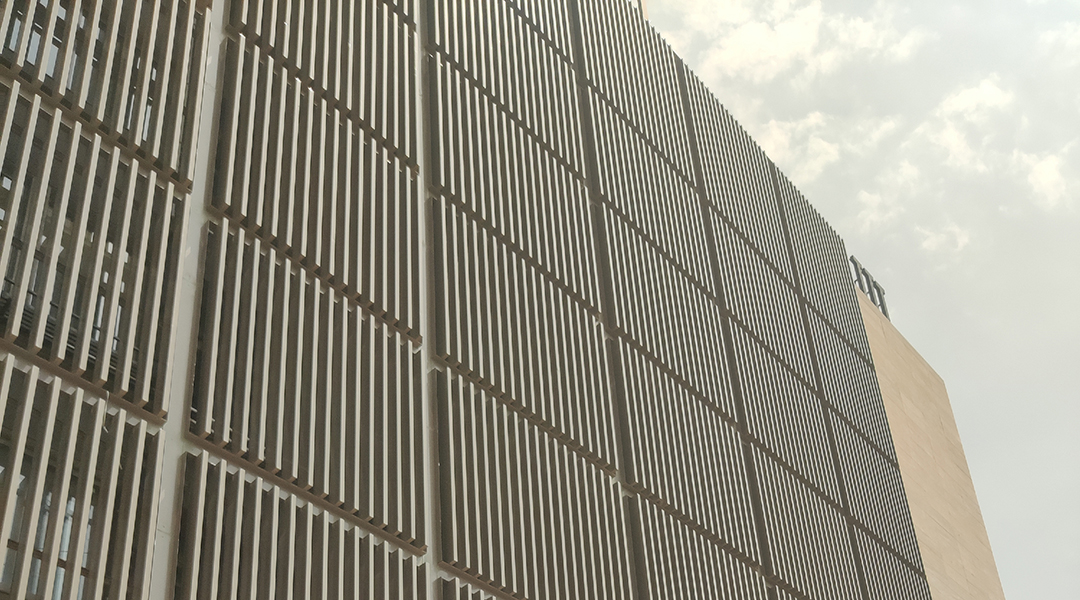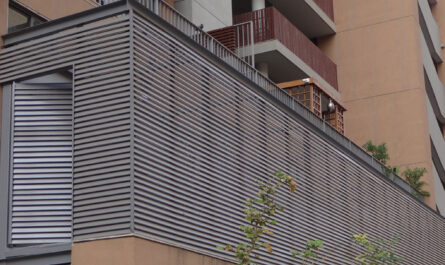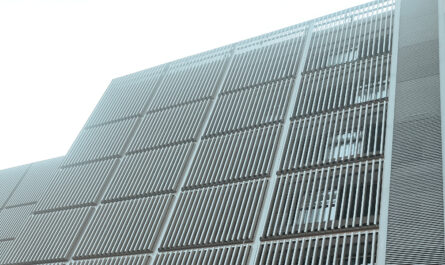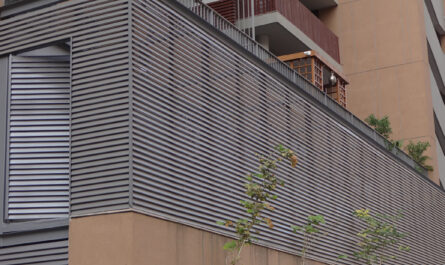The facade of an edifice is more than a compendium of external features – it comprises an essential radical as a barrier against what may be the most disastrous eventuality threatening human life and property: fire. The aspect of the architecture of an edifice has become severely complicated by the possibility of increasingly intricate designs coupled with quicker evolving technologies in actual building of structure; therefore, comprehensive fire protection strategies for exterior building applications have become very critical for safety.
Fire risk in building facades is a complicated aspect that needs an overall approach to material, systems design, and continuous risk management. The most horrible context of incidents in recent years has badly demonstrated the potentially disastrous consequences of neglecting true facade fire protection. These incidents have changed the position of facade design from an issue of aesthetics into one of critical safety engineering.
Deep comprehension of fire behavior and material interaction is what the foundation of effective facade fire protection can well-advise. Fire does not just move within a box in a predictable and linear manner-it travels quite quickly through very complex pathways, finds its way around weaknesses in the building envelope design, and propagates beyond limits. Such understanding of those transmission mechanisms will require eluding the mundane check of compliance and embark on a comprehensive risk assessment methodology.
Material selection is the most fundamental first step to derisk facade design. All materials do not possess the same degree of fire resistance; also, the way these materials interact with each other often creates unforeseen weaknesses. Thus, it is important for architects and engineers to conduct more than just the evaluation using such parameters as combustion, material fire resistance ratings, and fire resistance of the entire systems when considering failure to predict fire performance under extreme thermal stress.
Non-combustible materials, in fact, can be seen as the ideal elements for designing fire-resistive facade systems. Mineral-based composites, specific fire-resistance glass types, and some metal panels are materials that have built-in resistances to ignitions and fire spread. There are materials that retain structural integrity under high temperatures, form natural barriers that can delay or stop the progress of fire, and allow further evacuation time in case of emergency.
Choosing the right material for insulation is another major risk reduction strategy. Traditional foam-based insulation materials tend to be horrifyingly flammable, often acting like rapid fire accelerants. Living in an increasing modern best practice of having non-combustible insulation like mineral wool and ceramic fiber, these materials not only deny ignition but even help confine a fire’s spread between building areas.
Fire barrier and compartmentalization technology have completely changed how fire is protected in a facade. The mounting of horizontal and vertical fire breaks constitutes a set of means by which to sever any potential pathways for fire progression, physically blocking flame and heat transmission. Such engineered systems most often involve non-combustibles, such as specially formulated mineral boards or advanced membranes harnessing fire resistance, and thus divide the fa?ade into manageable fire containment areas.
Innovative fire-testing methods have given a new, immeasurable dimension to experimental assessment of facade fire risk. Modern evaluation protocols extend far beyond a simple material flammability test to simulate complex real fire scenarios that investigate the overall facade systems under extreme thermal conditions. These sophisticated approaches provide an unprecedented insight into the possible fire transmission mechanisms and allow designers to address vulnerabilities long before implementation.
The global regulatory landscape regarding facade fire performance requirements has been made stricter because of the increasingly great awareness on fire safety. Building codes now overwhelmingly also require fire test data for almost every aspect of the facade, meaning that manufacturers and designers must now demonstrate in their specific performances how they achieve their material fire resistance capabilities. Current evolution towards heightening standards pushes the entire construction industry to adopt a more rigorous, even scientifically-informed, approach to exterior building design.
Continuously, technological advances have come up with possibilities for fire protection on the facade. An example is the intumescent coatings. These advanced materials undergo drastic expansion and form insulating char layers when exposed to very high temperatures where they convert their surfaces to temporary fire resistance barriers from surfaces that, under normal conditions, are combustible. Another such innovative material is the phase change materials that can absorb thermal energy, hence slowing down the fire’s progress while giving more protection.
Geographies and environments tend to define the design considerations for facade fire risk. Certain buildings would require design approaches to be much nuanced for wildfire-infested areas, high cities with many buildings, and those with extreme temperature differences. All elements of material choice and system design would depend on local climate factors, sources where fire can originate, and regional fire history.
Economic considerations should be a vital part of planning firesafe facades. Although advanced fire-resistant materials usually cost higher in first investments, they really boast much bigger value with regard to long-term risk reduction. Less to pay in insurance premiums, better safety standards for buildings, or perhaps even reducing catastrophic loss scenarios would make such investments worthwhile over a building’s life cycle.
The interdisciplinary collaboration is now becoming an essential factor for the effectiveness of all possible actors in facade fire protection. Architects, fire safety engineers, material scientists, and regulatory experts must work, exchanging experiences and questioning traditional design assumptions in their practices. It is in this spirit that design has moved beyond aesthetic and cost dimensions to adopt safety considerations-first objectives achieved by scientifically-informed holistic approaches.
Today, digital simulation technologies transform the fire susceptibility assessment of facades. The most advanced computational modeling allows designers to virtually test the complex scenarios of a fire event and explore possible transmission pathways in far more detail than hitherto. Building design optimally integrates simulation tools with physical testing and real world experimentation to expose potential weaknesses in facade systems prior to their actual implementation.
High promises are kept for future facade fire protections in even more advanced fire management methods. Current research investigates the development of adaptive, intelligent façade systems that will actively sense and react to possible fire threats, for instance, facades equipped with advanced sensor technologies that would be able to detect thermal anomalies in real-time that might trigger automated fire mitigation responses.
The comprehensive facade fire protection is an evolving journey of technological dynamism, scientific research, and collaborative engineering. While fire behavior understanding is still advancing, so too will the methods by which we construct better yet safer exteriors over time. The message is the same: safeguard human life and property through intelligent, scientifically-informed design approaches.
The complete facade fire protection systems tend to be an ongoing development process involving technological innovations and scientific research and collaborative engineering, which will complement the ever-growing comprehension of fire behavior in creating safe and resilient buildings. The objective continues to protect human life and property through intelligent, scientifically informed design ways.
Good facade fire protection is not about sacrificing absolute perfection, but rather setting up intelligent adaptive systems to reduce risks and allow that seeker of safety precious extra time in emergencies. It is what it is: aesthetic harmony between art, material science, and engineering ingenuity with a long history of commitment to human safety;
In fact, as architectural technologies will be developed further, the facade will increasingly not only serve as a building’s external enclosure but also as a more highly sophisticated, dynamic system for safeguarding property, responding to the emergency, and ultimately saving lives. The future of building design lies in our abilities to create more intelligent, responsive, and safety-oriented architectural solutions.




